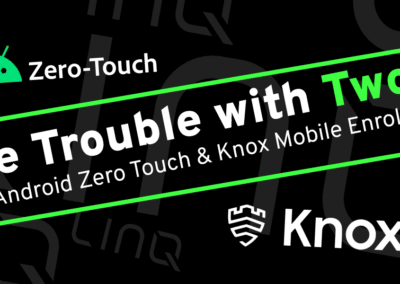
Distracted driving is a major threat to lives on U.S. roadways, causing 3,142 fatalities in 2020 alone. It’s especially hazardous for drivers of commercial vehicles, who are constantly on the road, often in trucks much bigger and heavier than passenger vehicles.
Research from the Federal Motor Carrier Safety Administration shows that truck and bus drivers who text behind the wheel are 23 times more likely to be involved in a crash or another incident.
For businesses that manage vehicle fleets, distracted driving is a challenging problem. A company may have hundreds or thousands of vehicles on the road daily, including workers’ trucks, package delivery vans and other last-mile providers, as well as field sales and services vehicles. To reduce driver distractions, many companies are turning to mobile device apps like LifeSaver Mobile that enforce a hands-free experience for drivers.
This type of driving app not only has safety as a primary focus, but also helps companies manage costs and other risks associated with distracted driving. For instance, driver safety apps can help to reduce insurance claims, citation fees, injury and worker compensation expenses, property damage, and lawsuits. They can also prevent the reputational damage associated with a branded commercial vehicle being involved in or responsible for an accident.
Guardrails that prevent drivers from texting while driving or manually placing calls can be as crucial for safety – and cost reduction—as the routine maintenance that keeps vehicles road-worthy. By helping companies establish a culture that prioritizes safe driving, apps can be a valuable component of a fleet safety program.
The benefits of a driver safety app like LifeSaver Mobile
LINQ is a proud partner of the LifeSaver Mobile app as our managed mobility services enable business leaders to be rest assured that this solution is providing its many key benefits. With LifeSaver Mobile, fleet managers can ensure drivers stay safe by detecting when they are driving and blocking any handheld cell phone use while they are on the road. Of course, drivers still have access to navigation and voice commands, and they can continue to make and receive calls if the device is Bluetooth-connected or otherwise hands-free.
In addition to preventing handheld phone use on the road, the app also focuses on speeding. It can emit a beep or a tone when a driver goes over the speed limit or, in LifeSaver Mobile’s case, deliver a voice message recorded by a fleet manager.
Moreover, LifeSaver Mobile generates a wealth of data that companies can use to reduce costs, improve operations, and increase driver monitoring. The administration portal provides access to deployment, configuration, and a data reporting dashboard. For instance, the app can help businesses identify dangerous behaviors, such as habitual speeding. Being able to monitor these behaviors and promptly intervene – for instance, by giving drivers additional coaching or training – makes it much more likely that companies can take appropriate action before someone gets hurt.
Ongoing data and insights can also help businesses reduce costs and increase operational efficiency. For instance, tamping down on speeding infractions can lower fuel costs. Data on dwell times lets businesses know when drivers may be taking too long at their stops. These and other insights enhance companies’ visibility into their fleets and enable them to make data-driven decisions that improve overall safety and operations.
How corporate-owned devices ensure drivers adhere to safety apps
To reap the benefits of an app like LifeSaver Mobile, companies must prioritize corporate-owned device programs over bring-your-own-device (BYOD) programs.
With ownership, companies can control employee phones by using MDM to ensure critical safety apps are installed, operating, updated, and made unremovable. MDM also helps organizations achieve high security standards by protecting sensitive corporate data and enabling remoting wiping if a mobile phone goes rouge.
Beyond that, having an enterprise mobility strategy is key for businesses managing large fleets as mobile devices drive connectivity among drivers, dispatchers, and home offices or managers. For instance, delivery drivers depend on routing software for their itineraries. If a device stops working, a driver may not receive critical updates, such as a dispatcher adding a new stop to the schedule.
Partnering with a managed mobility services provider like LINQ can help companies minimize the risk of device downtime. MMS experts can troubleshoot devices while drivers are on the road. They can also manage mobile device deployment, issuance, and recycling, as well as minimize the monthly expense of corporate devices.
By handling all aspects of MDM and support, MMS partners take a significant burden off fleet managers so they can focus on the work they do best: keeping their fleets safe, efficient, and on the road.
Between scheduling delays, rising fuel costs, and weather disruptions, fleet management can be incredibly complicated. MMS partners help companies optimize their device programs to enhance communication, driver safety, and device security.
Final thoughts
Driver safety is important to everyone, and it’s especially serious for businesses with vehicle fleets. The right solutions and partners provide assurance that businesses have implemented the best measures to keep drivers safe on the roadways.
About LifeSaver Mobile:
LifeSaver Mobile is a leading app-based solution for fleet safety, focused on helping companies and organizations reduce mobile distraction and speeding by their employees while driving. We provide fleet operators and auto insurers with the tools they need to reduce collisions caused by cell phone-related distracted driving. Validated by over 50 million miles of driving to date, the LifeSaver Mobile patented platform is changing the culture of distracted driving around the world. For more information, visit http://www.LifeSaverMobile.com.



